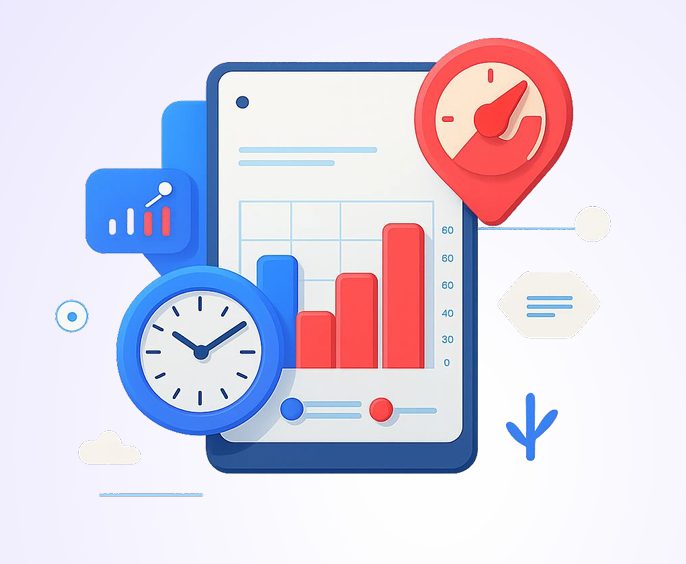Elevating Stability in Financial Success
Blog

Order to Cash (O2C) and the role of analytics (AI/ML)
Introduction
The Order to Cash (O2C) process is a critical business cycle influencing revenue, cash flow, and customer relationships. As companies pursue operational efficiency and precision, Artificial Intelligence (AI) and Machine Learning (ML) are revolutionizing O2C by streamlining workflows, enhancing decision-making, and mitigating risks. This blog delves into how AI/ML elevates the O2C process, highlights key applications, and outlines best practices for adoption.
Understanding the order to cash (O2C) process
The O2C cycle involves pivotal steps that ensure seamless transitions from order placement to payment collection.
- Order management – Validating and processing customer orders
- Credit management – Evaluating customer creditworthiness
- Order fulfillment – Picking, packing, and shipping products
- Invoicing – Creating and dispatching accurate invoices
- Accounts receivable – Tracking unpaid invoices and managing follow-ups
- Cash application – Aligning payments with corresponding invoices
- Collections management – Resolving overdue payments effectively
- Reporting & analysis – Analyzing performance metrics for continuous improvement
Why AI/ML is essential for the O2C process?
Traditional O2C workflows often suffer from manual errors, delays, credit risks, and suboptimal cash flow. AI and ML tackle these issues by
- Automating routine tasks to boost speed and precision
- Enabling data-driven decisions via predictive analytics
- Minimizing bad debt through advanced credit risk evaluation
- Uncovering payment trends to refine collection strategies
- Detecting transactional anomalies and potential fraud
Key AI/ML use cases in the O2C process
- AI-powered order processing and validation
AI automates order validation by flagging errors, ensuring compliance, and prioritizing high-value orders. Natural Language Processing (NLP) and Large Language Models (LLM) extracts and analyses data from unstructured requests, cutting manual intervention. - Predictive credit risk evaluation
ML models assess customer payment histories, transaction behaviors, and external data (e.g., credit scores) to forecast default risks, enabling dynamic credit limit adjustments. - Automated invoice processing and discrepancy detection
AI tools streamline invoicing accuracy, reducing disputes. ML identifies billing anomalies to prevent revenue loss. - Intelligent collections and payment forecasting
AI predicts late-paying customers using behavioral analytics, triggering automated reminders or tailored discounts to accelerate collections. - Cash application automation
ML algorithms reconcile payments with invoices, even without remittance details, speeding up financial reconciliation. - Customer behavior and trend analysis
AI segments customers by payment patterns, enabling personalized engagement and proactive relationship management.
Benefits of AI/ML in O2C
- Enhanced efficiency – Automation slashes processing time
- Greater accuracy – Reduced errors in orders, invoices, and cash matching
- Optimized cash flow – Predictive insights shorten payment cycles
- Proactive risk management – Fraud detection and credit risk mitigation
- Informed decision-making – Real-time analytics refine financial strategies
Best practices for implementing AI/ML in O2C
- Identify business priorities – Pinpoint pain points where AI adds maximum value
- Select compatible solutions – Ensure AI/ML tools integrate with existing ERP/O2C systems
- Prioritize data quality – Clean, structured data is vital for model accuracy
- Launch pilot initiatives – Test AI programs in phases to gauge impact and adjust models
- Continuously refine – Update models regularly with fresh data and evolving business needs
Future of AI/ML in O2C
AI/ML integration will advance with innovations like deep learning, end-to-end automation, and AI chatbots for customer interactions. Organizations leveraging these technologies will gain a competitive edge through operational agility and improved customer experiences.
Conclusion
AI and ML are redefining O2C by boosting efficiency, mitigating risks, and enhancing financial outcomes. Adopting AI-driven analytics empowers businesses to optimize workflows, make smarter decisions, and strengthen cash flow management. For forward-thinking enterprises, investing in AI/ML is not optional—it’s imperative for sustainable growth.




.png)
